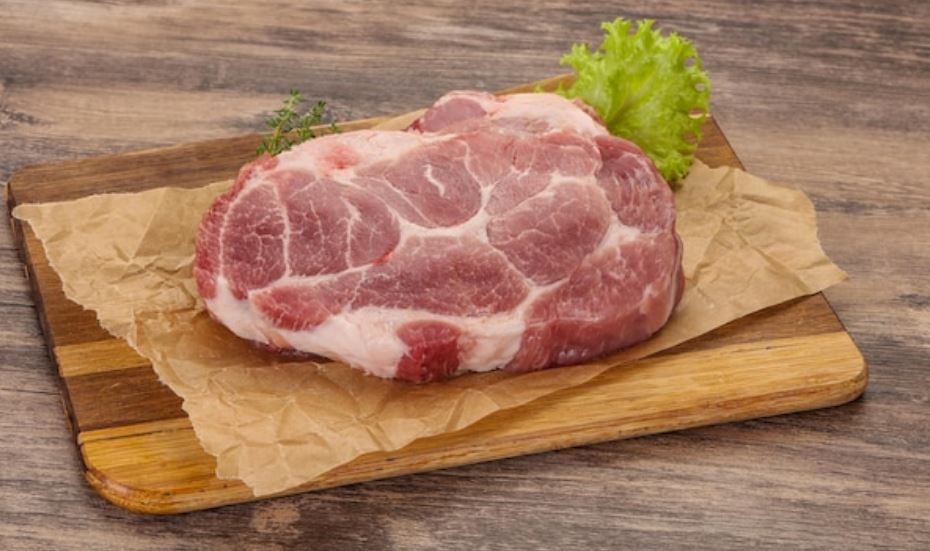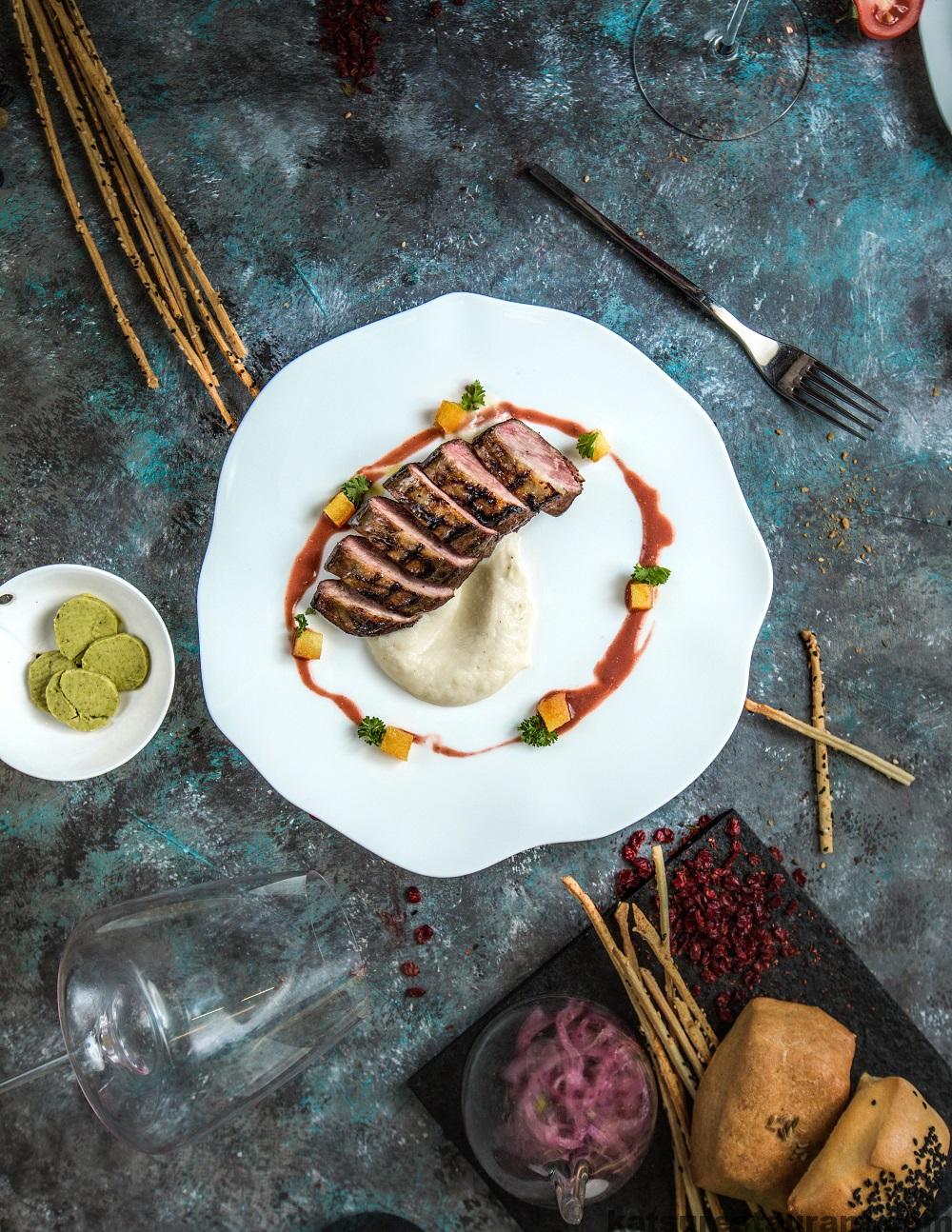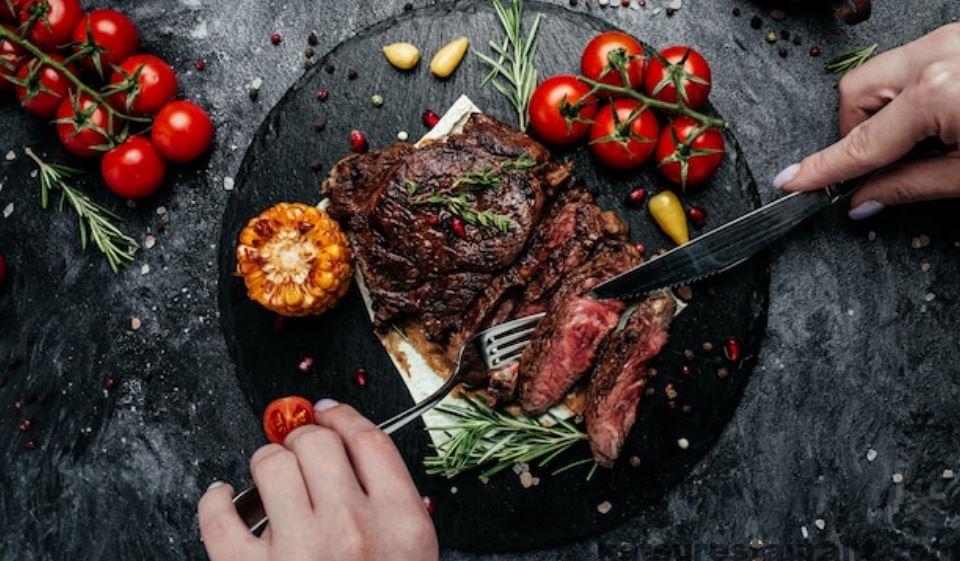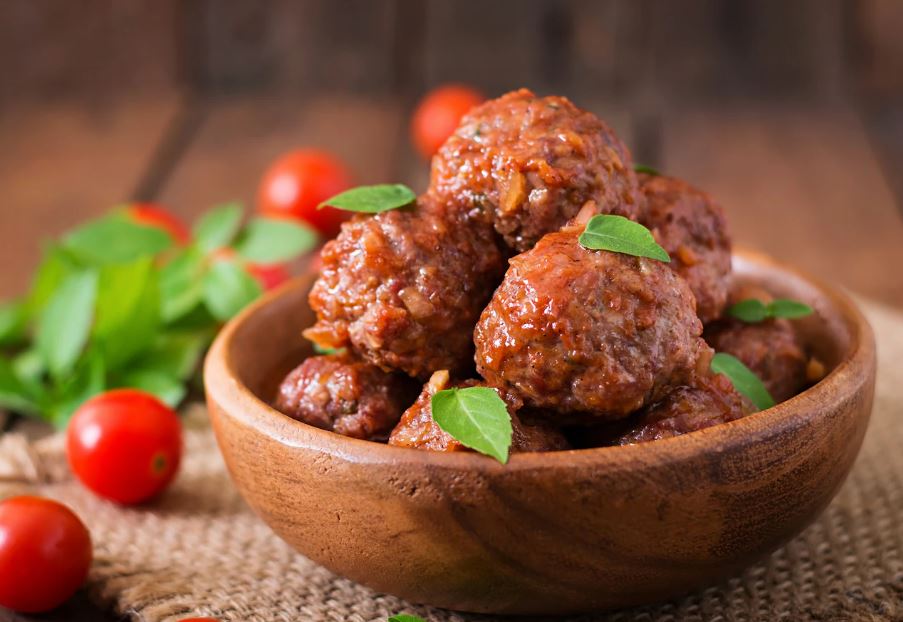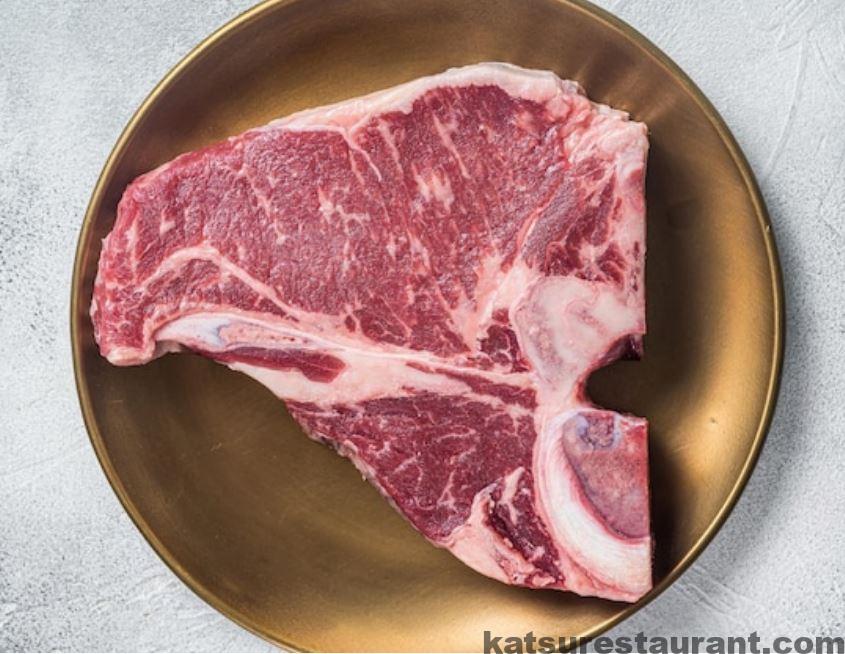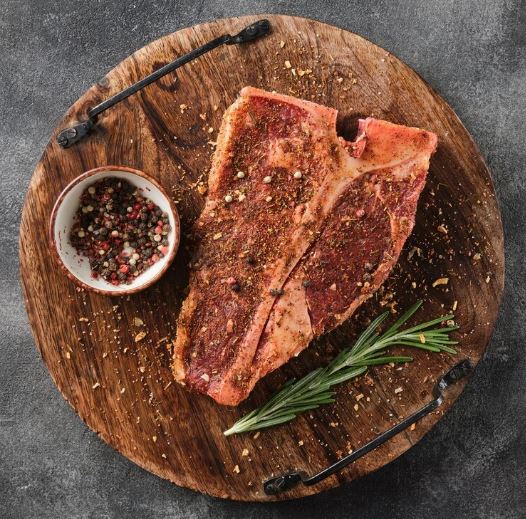When it comes to grilling, there’s nothing quite like the smoky flavor of a perfectly cooked brisket. But mastering this mouthwatering dish can be tricky—proper timing and temperature control are two essential factors in achieving that perfect, fall-off-the-bone texture every time. And one of the trickiest steps is knowing when and how to wrap your brisket correctly! In this blog post, we’ll break down everything you need to know about wrapping up your grilled beef brisket and getting it right each and every time. So grab your favorite beverages and get ready for some expert tips on how to become an ace at smoking meat on your grill!
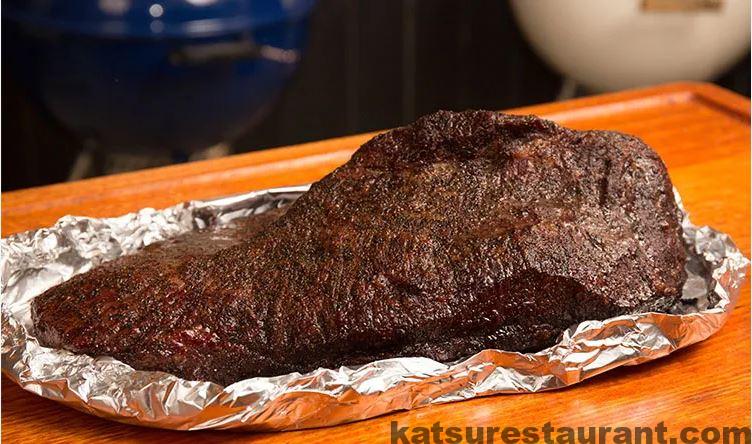
WHEN SHOULD YOU WRAP A BRISKET?
The most important trick to perfect brisket is getting the timing right. And when it comes to wrapping, the ideal time to do so is once the meat has reached an internal temperature of 165°F. This ensures that the brisket won’t overcook and dry out, while also allowing enough heat to penetrate for a good sear.
HOW TO WRAP A BRISKET?
Once the brisket has reached your desired internal temperature, you can begin wrapping it up. Here are the steps to follow:
1. Start with a sheet of aluminum foil large enough to wrap around the entire brisket.
2. Put a small amount of liquid—apple juice, beef broth or water—on the foil to create a barrier between the meat and the foil. This will help keep your brisket moist during the wrapping process.
3. Place the brisket on top of the foil and wrap it up tightly, making sure to seal in all sides.
4. Put the wrapped brisket back on your grill or smoker and continue cooking until the internal temperature reaches 200°F.
WHAT CAN YOU ADD TO THE WRAP?
If you want to add some additional flavor to your brisket, you can do so by adding herbs and spices directly to the wrap. Simply sprinkle a few pinches of your favorite herbs (such as rosemary or thyme) on the foil before you wrap up the brisket. You can also add a few slices of onion or garlic cloves to the foil for extra flavor.
HOW LONG SHOULD YOU COOK A BRISKET AFTER WRAPPING?
Once your wrapped brisket is back on the grill or smoker, it’s time to let it cook until it reaches an internal temperature of 200°F. This will usually take between 30 and 90 minutes, but it can vary depending on the size of your brisket and the heat of your grill. To check the internal temperature, insert a thermometer probe into the center of the meat; when it reads 200°F, you’re ready to enjoy!
WHY DO YOU WANT TO WRAP A BRISKET?
Wrapping your brisket is a great way to ensure that it turns out perfectly cooked, juicy and tender every time. The wrap helps to keep the meat moist and prevents it from drying out during the long cooking process. Additionally, wrapping your brisket will help to create a delicious bark on the outside of the meat—a crispy, flavorful crust that’s full of smoky BBQ flavor.
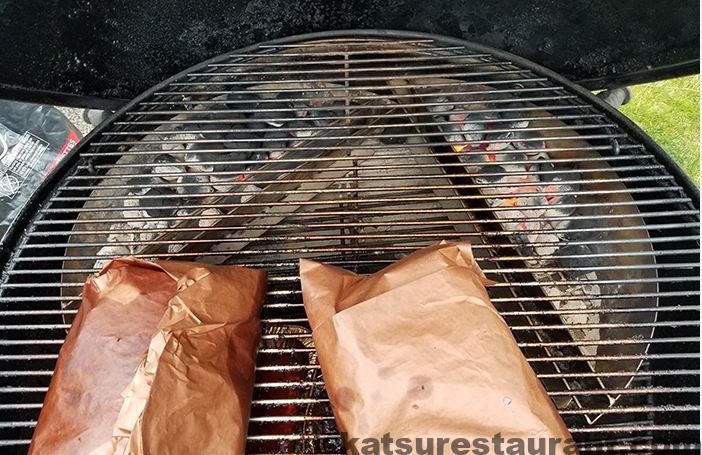
WHY WRAPPING BRISKET HELPS IT COOK FASTER:
Wrapping your brisket in foil helps it to cook faster and more evenly. This is because the aluminum foil creates a barrier between the meat and the heat, trapping in moisture and allowing heat to penetrate quickly. As a result, your brisket will cook faster and more evenly than if you were to leave it unwrapped—which means you’ll be able to enjoy it sooner!
CONTROL OVER THE BARK:
Wrapping your brisket also gives you more control over the bark—the crispy, smoky crust on the outside of the meat. By wrapping it, you can ensure that your brisket has a crispy, flavorful bark without having to worry about it drying out during the long cooking process. So next time you’re smoking a brisket, make sure to wrap it up—you’ll be glad you did! Best of luck on your smoking journey! Enjoy and happy grilling!
JUICIER MEAT:
Wrapping your brisket can help make the meat juicier, as it prevents moisture loss during the cooking process. This will help keep your brisket moist and full of flavor, even after hours of slow-cooking on the grill or smoker. Additionally, wrapping helps to seal in all those flavorful juices, so that you get a juicy, flavorful bite every time. So if you’re looking for a juicy, tender brisket, make sure you wrap it!
FASTER COOK TIME:
Wrapping your brisket can also help reduce the overall cook time. The foil helps to trap in moisture and heat which then penetrates quickly into the meat. As a result, you’ll be able to enjoy your brisket in a shorter amount of time. So the next time you’re cooking up a brisket, don’t forget to wrap it! It can make all the difference!
SAFER COOKING:
Finally, wrapping your brisket can help make the cooking process safer and easier. Because the foil will help keep in moisture and heat, you’ll have less flare-ups on your grill or smoker. This means that you can cook your brisket more safely, without having to worry about burning it or ruining it with too much smoke flavor. So wrap up your brisket and enjoy the convenience and safety that comes with it!
ARE THERE DOWNSIDES TO WRAPPING BRISKET?
Although wrapping your brisket has many benefits, there are also some potential drawbacks. Wrapping it can make the bark less crispy on the outside of the meat, so if you’re looking for a crunchy crust, you may want to skip wrapping. Additionally, because the foil traps in moisture and heat, it can make it more difficult to judge the doneness of the meat. To get an accurate reading on the internal temperature, you may need to insert a thermometer probe directly into the meat—avoiding any areas covered by foil.
SLIGHT LOSS OF SMOKE FLAVOR:
Another potential downside to wrapping your brisket is that you may lose some of the smoke flavor. The aluminum foil creates a barrier between the meat and the smoke, so it’s possible that some of the smoky flavor will be lost. If you want to maximize the smokiness of your brisket, try using wood chips or chunks that you can place directly on the foil. This will help ensure that your brisket gets plenty of smoke flavor while still being wrapped up in foil.
LOSS OF TEXTURE TO BARK:
Finally, wrapping your brisket can reduce the texture of the bark. Without that slow-cooked crispy crust on top, you may find yourself with a less flavor and less crunchy bite. This is especially true if you’re using an electric smoker or a charcoal grill without much smoke flavor. If you want to keep the crunchy texture but still want to wrap up the brisket, try using a sharp knife to score the top layer of the meat and then wrapping it, as this can help retain some of that texture.
RISK OF OVERCOOKING:
Since the foil helps to trap in moisture and heat, there is a risk of overcooking the brisket if you’re not careful. Be sure to monitor the internal temperature closely and remove it from heat when it reaches your desired temperature. Additionally, it’s important to check for doneness regularly by poking the meat with a thermometer probe to ensure that it is cooked through. This will help avoid any potential overcooking and guarantee the perfect brisket every time!
OPTIONS FOR WRAPPING BRISKET
There are a few different options for wrapping your brisket. The most common is to use aluminum foil, which will help keep in moisture and heat while also protecting the meat from direct heat. If you’re trying to reduce the amount of smoke flavor that penetrates into the meat, try using parchment paper instead of foil. This will still help keep in the moisture and heat, but it won’t trap as much smoke. Finally, if you want to maximize the smoky flavor, you can use butcher paper instead of foil or parchment paper. Butcher paper is slightly more breathable than aluminum foil and will allow some of the smoke flavor to penetrate into the meat while still protecting it from direct heat.
WRAP BRISKET IN FOIL:
Wrapping your brisket in foil is a great way to ensure that it stays moist and flavorful. The aluminum foil will help trap in moisture and heat, while also protecting the meat from direct heat. This makes it easier to cook the perfect brisket without worrying about burning or drying out the meat. Additionally, wrapping your brisket can help reduce the smokiness of the meat, making it more versatile for a variety of recipes.
WRAP BRISKET IN BUTCHER PAPER:
Butcher paper is another great option for wrapping your brisket. Butcher paper is slightly more breathable than aluminum foil and will allow some of the smoke flavor to penetrate into the meat while still protecting it from direct heat. This allows you to enjoy the smoky flavor of your brisket without sacrificing moisture or texture.
WRAP BRISKET IN PARCHMENT PAPER:
Parchment paper is an excellent option for wrapping your brisket if you want to reduce the amount of smoke flavor that penetrates into the meat. The parchment will help trap in moisture and heat, while still allowing some of the smokiness to escape. This makes it a great choice for those who want to enjoy the smoky flavor without making it too overpowering.
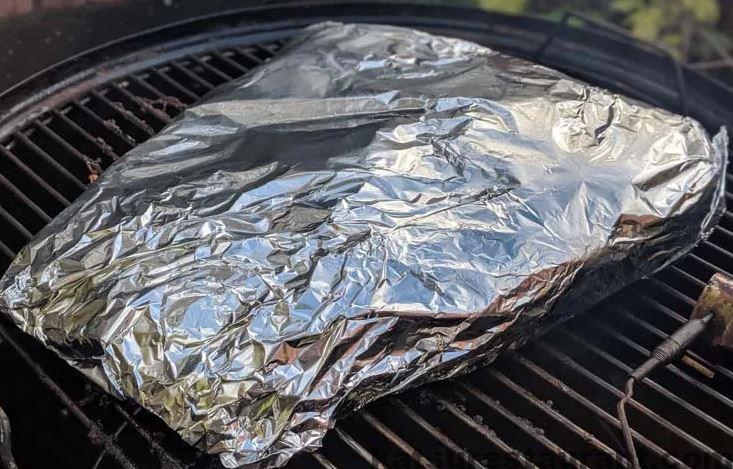
WRAPPED OR UNWRAPPED? IT’S YOUR BRISKET, YOU DECIDE
Whether to wrap your brisket or leave it unwrapped is largely a matter of personal preference. If you are looking for maximum smoky flavor, then unwrapping your brisket will provide the best flavor. On the other hand, if you want to maintain moisture and reduce the smokiness of the meat, then wrapping it in aluminum foil, parchment paper, or butcher paper is the way to go. Ultimately it comes down to what you prefer and your own personal tastes. So make sure that whichever method you choose, you enjoy every bit of that delicious brisket!
BENEFITS OF WRAPPING YOUR BRISKET:
Wrapping your brisket will help maintain moisture, reduce the smokiness of the meat, and make it easier to cook. Additionally, wrapping your brisket can help keep in some of the flavor while preventing it from drying out or burning. Finally, wrapping your brisket can provide a barrier against direct heat which is critical for achieving an evenly cooked and tender result.
So, no matter which wrapping option you choose – aluminum foil, parchment paper, or butcher paper – make sure to wrap your brisket for the best flavor and texture. With a little bit of patience and care, you will be able to enjoy perfectly cooked and delicious brisket every time!
FINAL THOUGHTS
Wrapping your brisket can be the key to achieving moist and flavorful results. Just remember to keep an eye on the internal temperature of your meat, and wrap it up once it reaches 165°F. By following these steps (and adding some additional flavors with herbs and spices), you’ll be sure to get mouthwatering results every time. Happy grilling!

